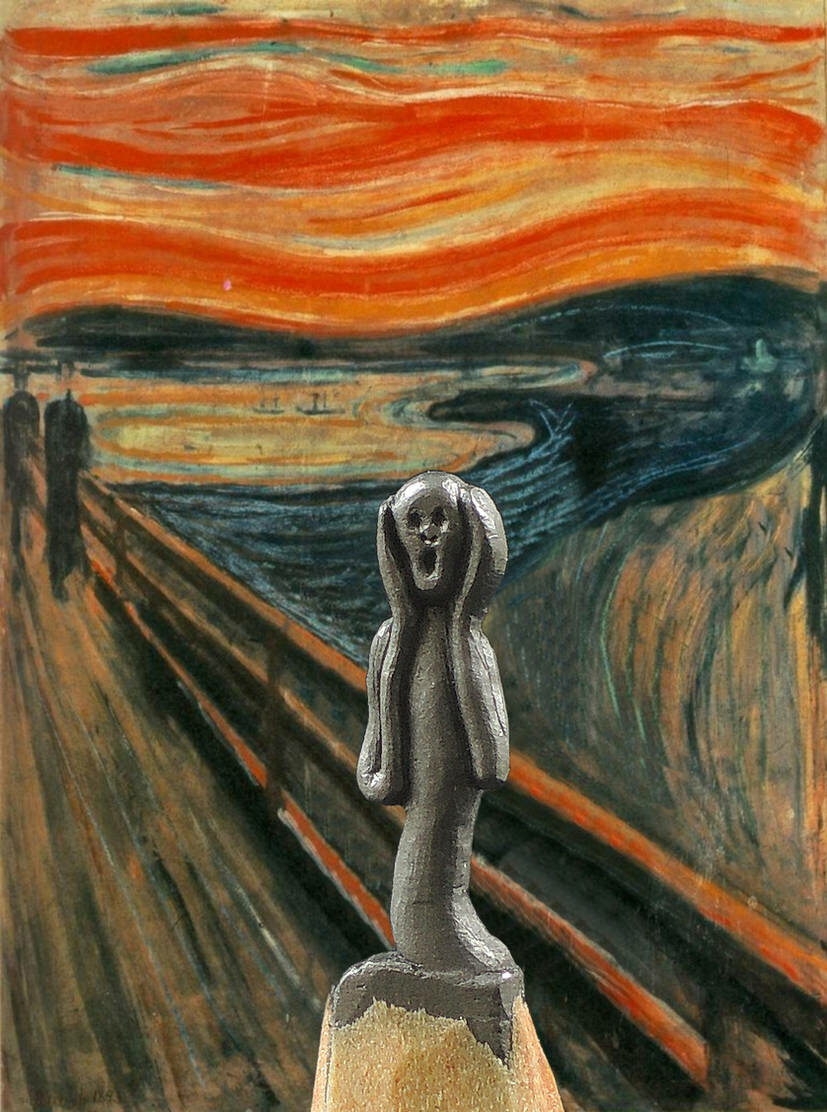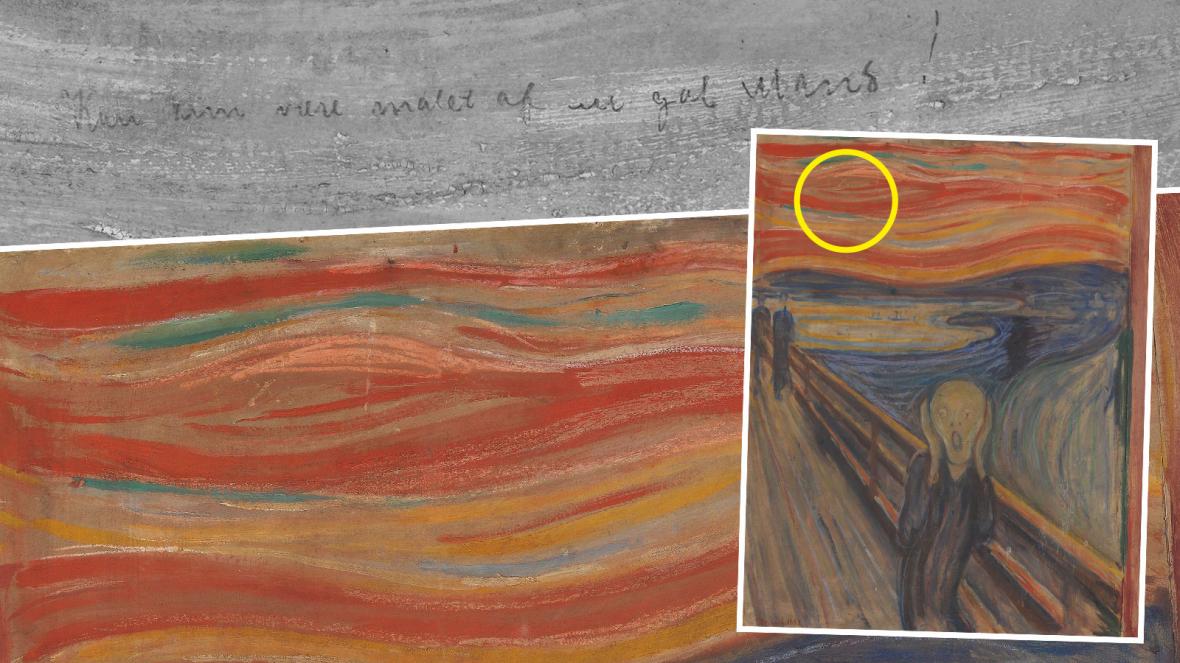Edvard Munch’s iconic masterpiece, ‘The Scream,’ has long mesmerized art enthusiasts with its haunting depiction of anguish and despair. The enigmatic painting, completed in 1893, stands as a defining work of the Expressionist movement, capturing the essence of human vulnerability and mental turmoil.

“The Scream” is a relatively compact painting, measuring approximately 91 x 73.5 centimeters (36 x 28.9 inches), which is a sizeable yet intimate format that enhances the emotional impact of the artwork. Munch created several versions of “The Scream,” including paintings, pastels, and lithographs, but the most renowned version is the tempera and crayon on cardboard.
For this masterpiece, Munch used cardboard as his support material. Cardboard was a popular choice among artists during that time due to its affordability and accessibility. However, it’s important to note that cardboard, as a material, may be prone to deterioration over time, making proper conservation and handling crucial for its preservation.
Regarding the tools and materials used for the actual rendering of “The Scream,” Munch utilized a combination of tempera paint and crayons, which can be found today for those seeking to create a rendition akin to “The Scream”. Tempera is a medium consisting of pigment mixed with a water-soluble binder, usually egg yolk, which provides a smooth and matte finish to the artwork. The crayons, possibly oil pastels or wax-based crayons, were applied to enhance details and texture.
Amidst the widespread admiration for ‘The Scream,’ a hidden secret lay concealed within the artwork, leaving art historians and enthusiasts intrigued for over a century. Join us on a journey of discovery as we unveil the mystery behind the cryptic message within Munch’s timeless creation.
At first glance, ‘The Scream’ conveys a visceral emotion, representing the universal experience of fear and anxiety. The painting’s profound impact on viewers has led to numerous interpretations of its inspiration. However, it was only recently that advanced infrared imaging revealed a hidden message inscribed by the artist himself. The text reads, “Kan kun være malet af en gal Mand!” (“Can only have been painted by a madman!”), a poignant statement that adds complexity and depth to the masterpiece.

The revelation of the inscription sheds light on Munch’s emotional journey as an artist and a vulnerable human being. The cryptic message was first noticed in 1904, eleven years after the painting’s creation, during an exhibition in Copenhagen. Critics speculated that an outraged viewer had defaced the artwork, questioning Munch’s mental state. However, recent discoveries using modern technology confirmed that Munch personally wrote the inscription.
The writing’s presence reflects Munch’s response to the critiques of his state of mind and the perception that he suffered from mental instability. The inscription, in Munch’s own hand, takes on an ironic tone, as the artist humorously addresses the perception while remaining true to his artistic integrity. It is believed that the message was added after a student club event where the painting and Munch’s emotional state were discussed. By writing on his own artwork, Munch took control of the narrative and expressed his resilience.
Munch’s personal history adds depth to the hidden message. Concerns about hereditary illnesses, such as mental and nervous disorders, were prevalent in his family. The emotional burden of these familial struggles weighed heavily on Munch and his siblings. Through ‘The Scream,’ the artist channeled his own vulnerability, creating an enduring testament to the complexities of the human psyche.
As we embrace the secret message within ‘The Scream,’ we gain a deeper understanding of Edvard Munch’s artistic intent. It is an invitation to explore the depths of human emotions, the challenges of mental health, and the ironies of perception. The inscription reveals Munch’s desire to take control of his narrative and challenge societal norms, immortalizing his artistic legacy.
Edvard Munch’s ‘The Scream’ remains an enigma that captivates the art world. The discovery of the secret message adds another layer of fascination to the timeless masterpiece. As we ponder the complexities of the human condition and the power of art to express profound emotions, let us embrace the creative spirit that unites us all. Through Munch’s brushstrokes and hidden message, we find a reminder that art transcends time and touches the very essence of humanity.

